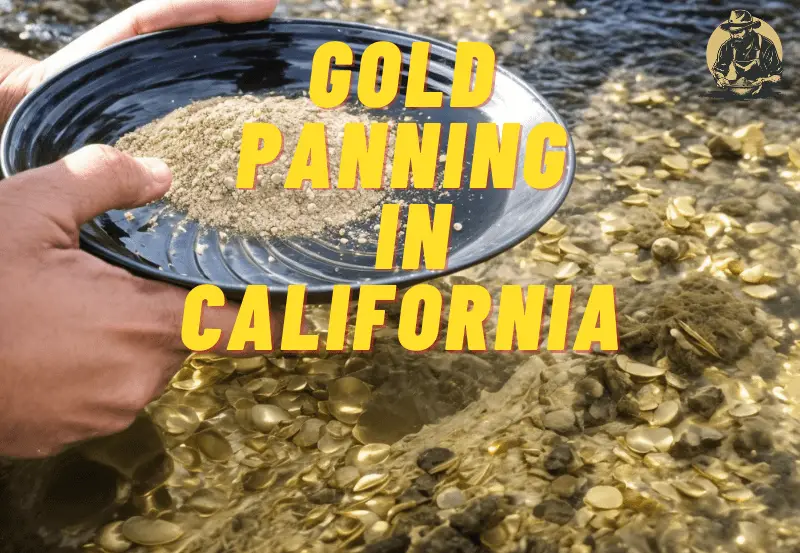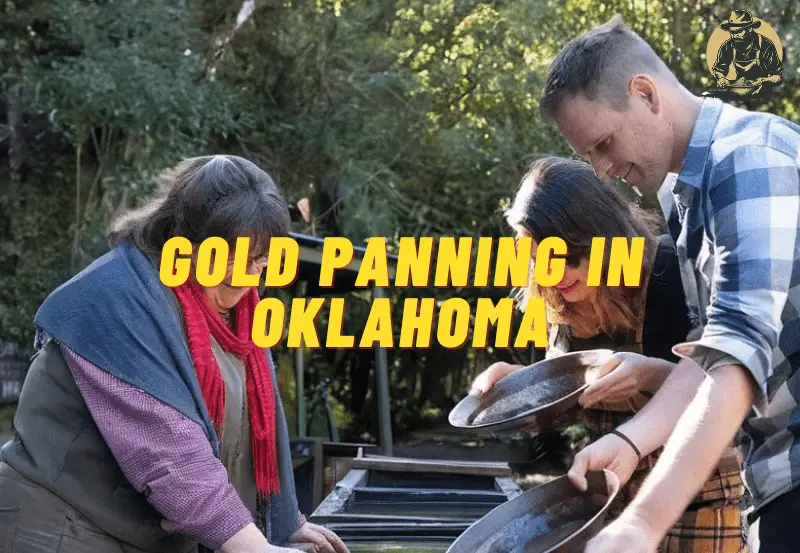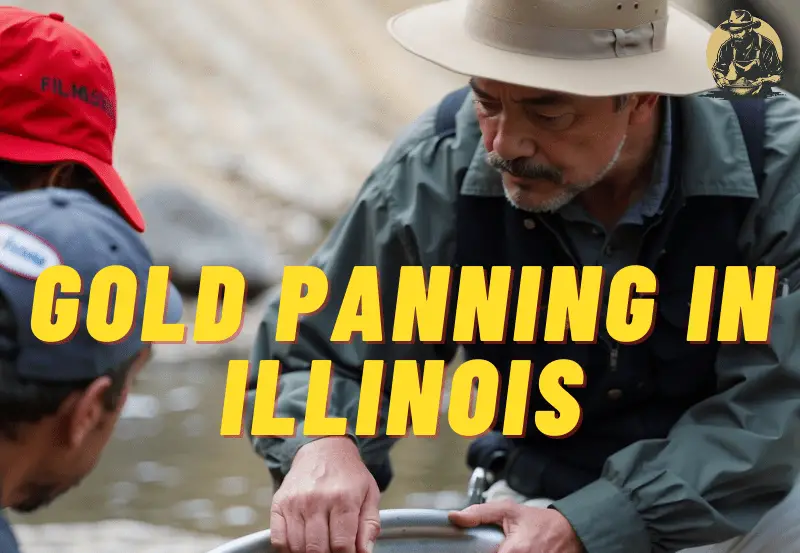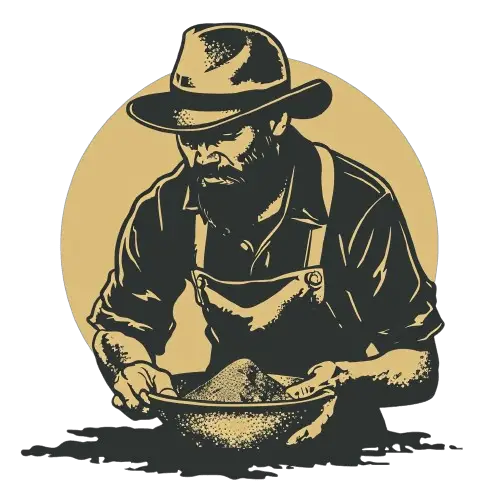Immerse yourself in the world of gold panning in California, where you can uncover hidden treasures and connect with the state’s rich mining history. Join the ranks of adventurers who have found fortunes and created legacies during the California Gold Rush. This extraordinary journey will leave lasting memories and capture your heart and mind.
History of Gold Mining and Gold Panning in California
Discovery of gold at Sutter’s Mill
The history of gold mining in California dates back to 1848 when gold was discovered at Sutter’s Mill by James W. Marshall. It is said that Marshall found a shiny yellow nugget while working on John Sutter’s sawmill on the American River. This discovery sparked a massive gold rush that would forever change the course of California’s history.
Gold Rush of 1849
The news of Marshall’s discovery spread like wildfire, and people from all over the world flocked to California in search of their fortune. The year 1849 saw a massive influx of gold-seekers, hence the name “Gold Rush of 1849.” These prospectors, often referred to as “forty-niners,” braved treacherous journeys by land and sea to try their luck in California’s gold fields.
Boomtowns and ghost towns
As people poured into California in search of gold, numerous boomtowns sprang up almost overnight. These lively and bustling towns were full of hopeful miners, merchants, saloons, and gambling halls. Some of the most famous boomtowns include San Francisco, Sacramento, and Nevada City.
However, as quickly as these towns appeared, many also vanished just as fast. With the depletion of gold deposits, some mining communities became ghost towns, leaving behind only remnants of their once-thriving existence. Today, exploring these ghost towns gives visitors a glimpse into California’s rich mining past.
Effects of gold mining on California’s development
The impact of gold mining on California’s development cannot be overstated. The rapid influx of people seeking their fortune led to California’s rapid growth, transforming it from a sparsely populated territory to a thriving state. The gold rush spurred the construction of roads, bridges, and infrastructure, promoting the development of towns and cities. It also led to the establishment of agriculture and industry, as the influx of miners created a demand for goods and services.
Additionally, the gold rush had a significant impact on the cultural diversity of California. People from all walks of life, including individuals from various countries and ethnicities, came together in their pursuit of gold. This merging of different cultures helped shape the unique melting pot that California is known for today.
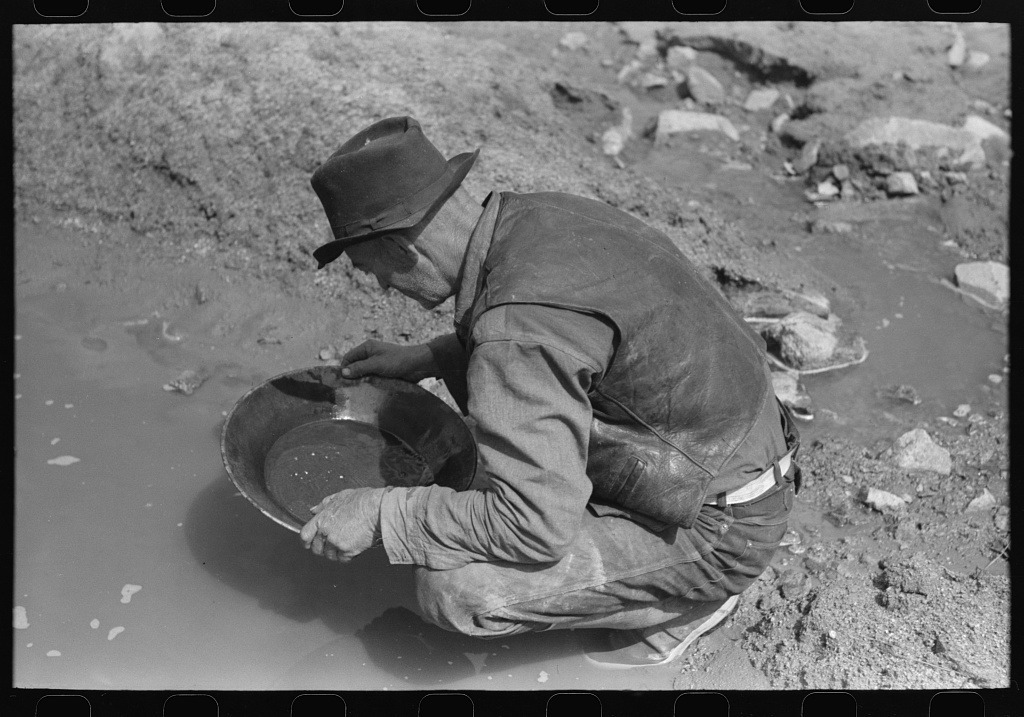
California’s Gold Rush Legends
The story of James Marshall
The story of James Marshall, the man who unknowingly set off the California Gold Rush, holds immense historical significance. Marshall’s accidental discovery while constructing Sutter’s Mill in Coloma played a vital role in shaping the destiny of California. His finding led to the influx of thousands of prospectors, the establishment of mining towns, and the rapid development of the region.
Famous gold miners and prospectors
During the Gold Rush, numerous individuals became well-known for their success as gold miners and prospectors. People such as John W. Mackay, James Lick, and Levi Strauss made their fortunes in the goldfields of California. These legendary figures not only left their mark on the state’s mining history but also contributed to its economic and cultural growth.
Tales of lost treasures
The allure of lost treasures has always captivated the imagination of treasure hunters and storytellers alike. California’s Gold Rush era is no exception, as it is filled with tales of lost treasures waiting to be discovered. From legendary lost mines to hidden caches of gold, these stories continue to spark the imaginations of those seeking adventure and fortune in the Golden State.
Where to Find Gold in California
Mother Lode region
The Mother Lode region, located in the central part of California, is renowned for its rich history of gold mining. It stretches over 120 miles and encompasses a series of gold-bearing quartz veins. The area has produced substantial amounts of gold, making it a prime location for prospecting.
Sierra Nevada
The majestic Sierra Nevada mountain range is not only a breathtaking natural wonder but also a region that yields gold. Along the rivers and streams that flow through the Sierra Nevada, gold can be found. Popular spots for gold panning in this region include the Yuba River, American River, and Feather River.
Trinity Alps
The Trinity Alps, located in Northern California, are home to a stunning wilderness perfect for outdoor enthusiasts and gold prospectors alike. Both the Trinity River and its tributaries offer excellent opportunities for gold panning. The picturesque beauty of the Trinity Alps adds an extra element of enjoyment to the gold panning experience.
Klamath Mountains
The Klamath Mountains, located in the northwestern part of California, are rich in mineral resources, including gold. Along the rivers that snake through this rugged and scenic landscape, abundant gold deposits can be found. The Klamath River is particularly known for its potential for gold discovery.
Desert regions
California’s desert regions, such as the Mojave Desert and the Colorado Desert, may not be the first places that come to mind when thinking of gold panning. However, these areas have been known to yield gold for those willing to explore their dry riverbeds and washes. Patience and persistence are key when prospecting in the desert.
The Basics of Gold Panning
Choosing the right equipment
To engage in gold panning, it is essential to have the right equipment. Basic tools include a gold pan, a shovel, and a classifier. Additionally, an assortment of optional tools such as a sluice box, snuffer bottle, and metal detector can enhance the gold panning experience.
Finding the right spot
Choosing the right location is crucial for successful gold panning. Researching areas known for gold deposits and understanding the geology behind where gold is likely to accumulate are essential first steps. Many public lands in California allow recreational gold panning, but it is important to be aware of any restrictions or regulations.
Techniques for panning
There are various techniques for gold panning, each with its own advantages and challenges. Some common techniques include the traditional swirling method, the side-to-side shaking method, and the gentle rocking method. Experimenting with different techniques can help you find the one that works best for you.
How to properly use a gold pan
Using a gold pan effectively requires some practice and technique. After selecting a suitable spot, fill the pan with gravel and sediment. Submerge the pan in water and gently agitate it to encourage the denser materials, including gold, to settle at the bottom. Carefully discard the lighter materials while retaining any potential gold flakes or nuggets.
Tips for beginners
For beginners, gold panning can be an exciting and rewarding activity. It is crucial to manage expectations and approach it as a recreational hobby rather than a guaranteed path to riches. Learning from experienced prospectors, practicing patience, and embracing the joy of the process can make the experience more enjoyable.
Permits and Regulations for Panning for Gold in California
Obtaining a gold panning permit
Before engaging in recreational gold panning in California, it is essential to obtain the necessary permits. The Bureau of Land Management (BLM) and the California Department of Fish and Wildlife (CDFW) issue permits that allow individuals to pan for gold on public lands. These permits help ensure that gold panning activities are conducted responsibly and in compliance with regulations.
Rules and regulations for recreational gold panning
While recreational gold panning is allowed on public lands in California, it is vital to adhere to specific rules and regulations. These may include limitations on the quantity of material to be removed, restrictions on digging or excavation, and guidelines for environmental protection. Familiarizing oneself with these regulations helps protect the natural resources and ensures a sustainable gold panning experience.
Protected areas and restrictions
Certain areas in California may be off-limits or have restrictions on gold panning due to environmental concerns or cultural preservation efforts. National parks, wildlife refuges, and cultural heritage sites are examples of protected areas where gold panning may not be permitted. Respect for these protected areas is crucial to preserve California’s natural and cultural heritage for future generations.
Gold Panning Tours and Classes
Organized gold panning tours
For those looking for a guided gold panning experience, organized tours can be an excellent option. These tours often provide all the necessary equipment and expert guidance. Knowledgeable guides share stories about the history of gold mining in California while helping participants discover the thrill of finding their own gold.
Educational classes and workshops
Gold panning classes and workshops offer opportunities to learn the techniques and skills required to be a successful gold prospector. These educational sessions can be beneficial for beginners looking to gain a solid foundation in gold panning or for enthusiasts aiming to improve their skills. Participants learn about the geology of gold deposits, advanced panning techniques, and the importance of environmental stewardship.
Learning from experienced prospectors
One of the best ways to enhance one’s gold panning skills is to learn directly from experienced prospectors. Often, these seasoned individuals are more than willing to share their knowledge and expertise with others. Connecting with local gold prospecting clubs or attending community events can provide valuable opportunities to learn from those who have spent years honing their craft.
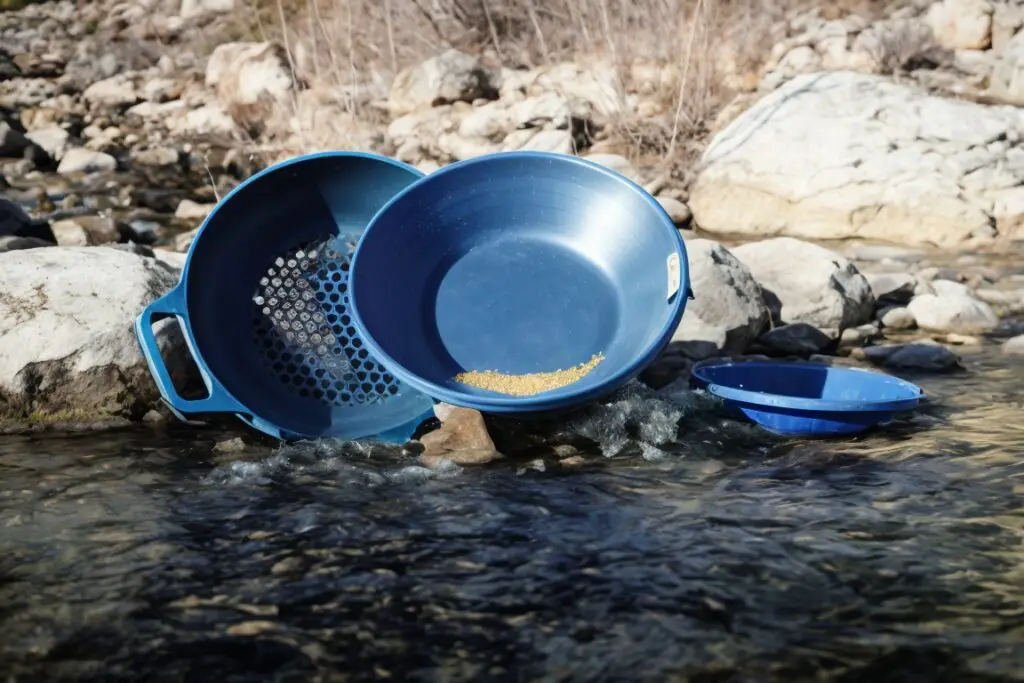
Equipment and Tools for Gold Panning in California
Gold pans
Gold pans, typically made from durable plastic or metal, are the most essential tool for gold panning. They come in various sizes, shapes, and designs to accommodate different panning techniques and personal preferences.
Sluice boxes
Sluice boxes are long, narrow devices used to separate gold from other sediments more efficiently. They work by allowing water to flow through a series of riffles, capturing heavier materials such as gold while letting lighter materials pass through.
Classifiers
Classifiers, also known as screens or sieves, help to separate larger materials from smaller ones during the gold panning process. They are used to ensure that only the appropriate-sized materials are added to the gold pan, thus increasing the efficiency of the panning process.
Snuffer bottles
Snuffer bottles are used to suck up small particles of gold, allowing for convenient collection and storage. These bottles typically feature a nozzle that can be submerged in water, helping to capture and retain the precious flakes or nuggets.
Metal detectors
While not essential for traditional gold panning, metal detectors can be a valuable tool for prospectors looking to expand their search area. These devices help identify potential gold deposits by detecting metallic objects buried beneath the ground.
Other Recreational Activities in Gold Country
Hiking and camping
Gold mining regions in California often boast breathtaking natural landscapes, providing ample opportunities for outdoor activities. Hiking and camping in these areas allow visitors to immerse themselves in the beauty of the Golden State while exploring the remnants of its mining history.
Fishing in California’s rivers
Many of California’s gold-bearing rivers are also home to an abundance of fish species. Fishing enthusiasts can cast their lines in these rivers, experiencing the joy of both angling and potentially discovering some gold. It is important to follow fishing regulations and obtain the necessary permits to ensure responsible fishing practices.
Exploring historic sites
California is dotted with historic sites that offer glimpses into its rich mining heritage. Exploring preserved mining camps, abandoned mines, and historic buildings allows visitors to step back in time and learn about the challenges and triumphs faced by the early gold seekers.
Visiting local museums
Local museums dedicated to California’s mining history provide a wealth of information about the region’s gold rush era. These museums showcase artifacts, photographs, and stories that immerse visitors in the captivating tales of California’s mining pioneers. It is a great opportunity to delve deeper into the historical context of gold mining in the state.
Gold Mining Safety Tips
Understanding potential hazards
Gold mining, like any outdoor activity, can pose potential hazards. It is crucial to familiarize oneself with the potential risks associated with gold mining, including physical injuries, weather-related dangers, and exposure to hazardous substances.
Protective gear and clothing
Using proper protective gear and clothing is essential for ensuring personal safety during gold panning. This includes wearing sturdy footwear, gloves, and clothing that protects against the elements, such as sun exposure and cold temperatures. The use of safety goggles and a dust mask is also advisable.
Avoiding environmental damage
Responsible gold panning involves a commitment to minimizing environmental impact. Miners should avoid damaging vegetation, disturbing wildlife habitats, or polluting waterways. Practicing “leave no trace” principles and adhering to any specific regulations regarding environmental protection help preserve the natural beauty of California’s gold-bearing regions.
Knowing your limits
Gold panning can be physically demanding, especially when spending extended periods in the outdoors. It is crucial to recognize one’s physical limitations and take breaks when needed. Staying hydrated, maintaining proper nutrition, and being mindful of one’s stamina contribute to a safer and more enjoyable gold panning experience.
Preserving California’s Mining Heritage
Conservation efforts and historical preservation
To ensure the continued preservation of California’s mining heritage, conservation efforts play a vital role. Organizations and individuals work tirelessly to protect historic mining sites, restore structures, and document the stories of those who participated in the gold rush era. These efforts help maintain the historical integrity of California’s mining landmarks for future generations to appreciate.
Promoting responsible gold panning
Promoting responsible gold panning practices is crucial for the preservation of California’s environment and cultural heritage. Educating aspiring prospectors about proper techniques, adhering to regulations, and encouraging environmental stewardship are essential components of responsible gold panning. By doing so, we can enjoy the rewarding experience of gold panning while ensuring the sustainability of California’s resources.
Supporting local communities
Gold mining and tourism have a significant impact on local communities in California’s gold country. Supporting local businesses, such as restaurants, accommodations, and shops, contributes to the economic stability and growth of these areas. By investing in the towns and communities connected to California’s mining heritage, we help maintain their cultural vibrancy and ensure their enduring legacy.
In conclusion, gold panning in California offers not only the chance to discover gold but also the opportunity to immerse oneself in the state’s rich mining heritage. Whether it’s exploring historic sites, venturing into picturesque landscapes, or simply trying your hand at prospecting in one of California’s many gold-bearing regions, the journey is bound to be filled with excitement and fascination. By approaching gold panning with a sense of adventure and respect, you can create lasting memories while celebrating the history and natural beauty of the Golden State.
Get Started Panning
| Product | Description | Link |
|---|---|---|
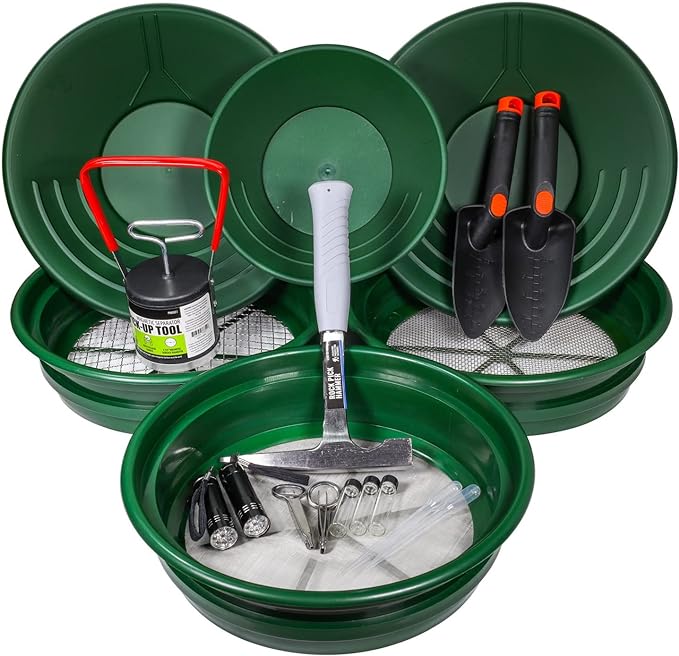 |
Deluxe Gold Panning Kit | Check it out on Amazon |
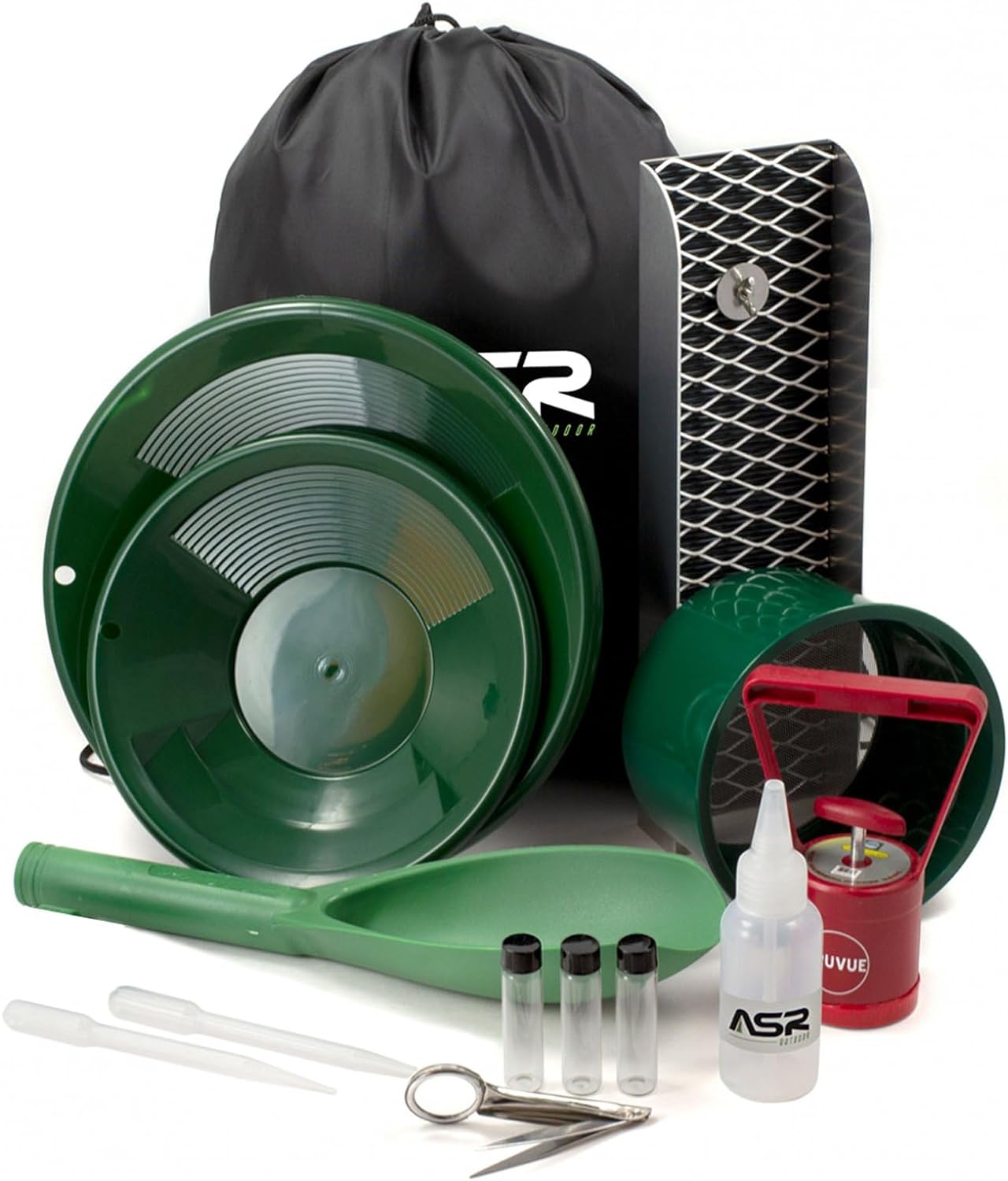 |
Advanced Gold Panning Set | Check it out on Amazon |
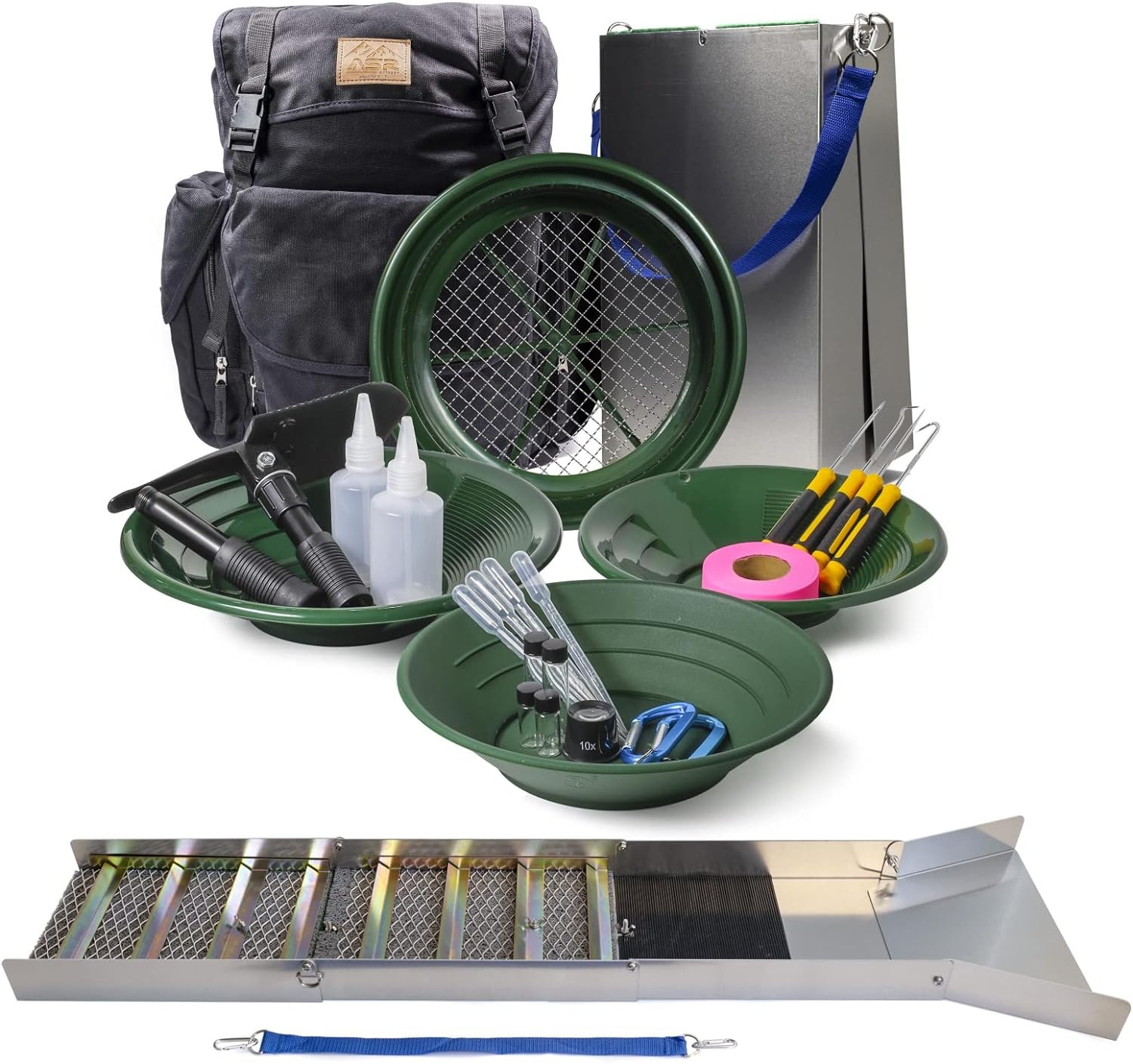 |
Professional Gold Panning Equipment | Check it out on Amazon |
Disclosure: As an Amazon Associate, I earn from qualifying purchases.
